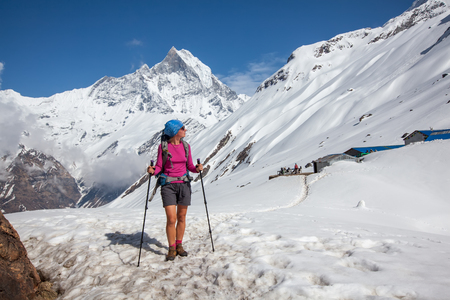1. Understanding Tree Fall Hazards in American Wilderness
Why Tree Falls Become a Risk After Winter and During Autumn Winds
After a harsh winter or during the gusty autumn season, forests and trails across the United States can become dangerous due to increased risks of falling trees and branches. Heavy snow, ice accumulation, and freezing temperatures throughout winter weaken tree trunks and limbs. When spring arrives or when autumn winds pick up, these weakened trees are more likely to break or fall unexpectedly. This is especially true in popular hiking areas like the Pacific Northwest, the Appalachian Mountains, the Rockies, and forested state parks all over America.
How Winter Storms and Autumn Winds Impact Trees
The cycle of freezing and thawing causes cracks in tree bark and wood. Snow and ice weigh down limbs, sometimes causing hidden internal damage. Later, when strong winds sweep through in the fall or after storms, even healthy-looking trees can topple if their roots are loose or if they have hidden rot. The table below shows some common types of damage:
| Seasonal Factor | Type of Tree Damage |
|---|---|
| Heavy Snow/Ice (Winter) | Limb breakage, trunk splitting, root loosening |
| Freeze-Thaw Cycles (Early Spring) | Bark cracks, internal wood weakness |
| Strong Winds (Autumn) | Whole tree uprooting, falling branches |
Forests and Trails at Higher Risk
Certain forest types—like those with lots of pine or shallow-rooted trees—are more likely to see hazardous tree falls. Trails that pass through low-lying wet areas or follow ridgelines are also at greater risk since wind speeds increase in these zones.
Key Points for Outdoor Enthusiasts
- Always be alert for leaning trees or branches overhead (“widowmakers”).
- Avoid camping or resting beneath dead trees or large hanging limbs.
- Check trail reports for recent storm damage before heading out.
This understanding helps hikers, campers, and outdoor workers stay safer by recognizing which conditions make tree falls more likely during these challenging seasons.
2. Recognizing Warning Signs of Unstable Trees
How to Spot Dangerous Trees Before They Fall
After a long winter or during those strong autumn winds, its crucial for hikers, campers, and anyone enjoying the outdoors to know how to identify trees that may be at risk of falling. North American forests are full of diverse tree species, and certain warning signs can help you stay safe from hazardous tree falls.
Common Warning Signs of Unstable Trees
| Warning Sign | What to Look For | Common North American Species Affected |
|---|---|---|
| Deadwood (Snags) | Bare branches with no leaves, brittle limbs that snap easily, bark peeling off | Oak, Maple, Pine, Aspen |
| Root Rot | Mushrooms or fungal growth at base, soft or crumbly wood near roots, tree leaning oddly | Sugar Maple, Spruce, Hemlock |
| Leaning Trunks | Tilted trunk (especially if new), cracked soil around roots, exposed roots on one side | Pine, Fir, Sycamore |
| Hanging Branches (“Widowmakers”) | Large broken branches caught in upper canopy, hanging loosely above trails or campsites | Cottonwood, Elm, Oak |
| Cracks or Splits in Trunk | Visible splits running vertically along trunk or major limbs, often after storms or heavy snow | Ash, Poplar, Red Maple |
| Cavities or Hollow Spots | Holes in trunk or large limbs, woodpecker activity can be a clue to internal decay | Willow, Birch, Hickory |
| Poor Leaf Coverage (Out of Season) | Lack of leaves on one side or throughout the tree when others nearby are full and green | Basswood, Cherry, Beech |
Why These Signs Matter After Winter and During Autumn Winds
Heavy snow loads can weaken branches and trunks over winter. Once spring arrives and autumn winds pick up later in the year, these weakened spots can cause trees or branches to fall unexpectedly. Deadwood and root rot make trees especially vulnerable during high winds. Leaning trunks might signal recent soil movement from freeze-thaw cycles or saturated ground after snowmelt.
Quick Safety Tips While Outdoors:
- Avoid setting up camp under dead or leaning trees.
- Watch for fresh cracks or soil disturbances after storms.
- If you hear creaking or snapping sounds overhead, move away quickly.
- If a trail is littered with fresh fallen branches, expect more hazards above.
- If you spot mushrooms at a tree’s base—especially shelf fungi—be extra cautious.

3. Environmental Factors Increasing Tree Fall Risk
Understanding Seasonal Weather Patterns
In many parts of the United States, especially in regions with dense forests or mountainous terrain, changes in weather patterns after winter and during autumn can have a big impact on tree stability. Recognizing these environmental factors is key to staying safe while hiking, camping, or even just walking through wooded neighborhoods.
Snowmelt and Saturated Soil
As temperatures rise in late winter or early spring, snow begins to melt. This process often saturates the ground with water. When soil becomes overly wet, it loses its grip on tree roots, making trees much more likely to tip or fall—especially larger or older ones. Its important to pay extra attention to the ground conditions after heavy snowmelt, particularly if you notice standing water or muddy patches around tree bases.
Strong Autumn Winds
Autumn brings gusty winds that can really test a tree’s strength—especially if they’re already stressed from previous storms, disease, or saturated soils. These winds can snap branches or even topple entire trees that are weakened by wet roots or internal decay. If you hear wind advisories or see leaves swirling furiously, be extra cautious around trees during your outdoor activities.
How These Factors Affect Tree Stability
| Environmental Factor | How It Increases Tree Fall Risk |
|---|---|
| Snowmelt | Saturates soil, loosening root systems and reducing support for trees |
| Saturated Soil | Makes it easier for roots to slip out of the ground, especially on slopes |
| Autumn Gusts | Puts extra force on branches and trunks; can break limbs or topple weakened trees |
| Heavy Rainfall | Similar to snowmelt, causes flooding around roots and increases instability |
What Hikers and Outdoor Enthusiasts Should Watch For
- Muddy Trails: Indicate recent saturation—check nearby trees for leaning or exposed roots.
- Freshly Fallen Branches: Suggest wind has already weakened some trees in the area.
- Trees Leaning More Than Usual: Especially after storms or thawing periods; these may be at higher risk of falling soon.
- Noisy Creaks and Cracks: Listen for unusual sounds during windy days—these might mean a tree is about to give way.
By understanding how seasonal weather affects tree stability, you can better recognize risky situations and make safer choices during your adventures outdoors.
4. Safety Tips to Avoid Hazardous Areas
Smart Choices for Campsites
After winter storms or during strong autumn winds, picking the right place to camp is crucial. Always avoid setting up your tent under old, leaning, or visibly damaged trees. Even healthy-looking trees can be at risk if their branches are large and overhang your site. Look for open areas away from potential hazards and check the ground for fallen branches or signs of past tree falls.
Quick Campsite Safety Checklist
| What to Check | Why It Matters |
|---|---|
| No dead or broken branches overhead | These can fall unexpectedly, especially in wind |
| Trees appear healthy (no cracks, fungus, or missing bark) | Unhealthy trees are more likely to fall or drop limbs |
| Avoid camping in narrow valleys with tall trees on both sides | Wind can funnel through and increase the risk of falling trees |
| No recent storm damage nearby | Nearby fallen trees suggest a higher risk area |
Trail Selection During Windy Seasons
Some trails are riskier than others after winter or during autumn wind events. Trails that cut through dense forests with many old or large trees present a greater hazard. When possible, choose routes that go through open meadows, ridgelines away from tall timber, or well-maintained paths where hazardous trees have been removed.
Tips for Safer Hiking Routes:
- Check park websites and trail reports for tree fall warnings before heading out.
- If a trail looks blocked by fresh debris or downed trees, turn back and find another route.
- Avoid hiking alone during high winds—there’s safety in numbers if help is needed.
Staying Alert in Changing Weather Conditions
Wind speeds can pick up quickly and conditions can change fast in the mountains or forests. Listen for creaking, cracking sounds above you—these noises often mean a branch or tree is about to fall. If winds become strong, move away from wooded areas and seek shelter in open spaces until it’s safe to continue.
5. What To Do If You Encounter a Dangerous Tree Situation
Steps for Reporting Hazardous Trees on Public Lands
If you come across a tree that looks unstable, has hanging limbs, or appears at risk of falling—especially after heavy winter storms or during strong autumn winds—its important to take action to keep yourself and others safe. Here’s what you should do:
| Step | Action | Details |
|---|---|---|
| 1 | Stay Clear | Move away from the tree and keep others at a safe distance. |
| 2 | Note Location | Mark the spot using GPS coordinates if possible, or note nearby trail markers, road signs, or landmarks. |
| 3 | Take Photos (if safe) | If it’s safe to do so, take photos of the hazardous tree to help officials assess the situation. |
| 4 | Contact Authorities | Report the hazard to park rangers, local forestry services, or the relevant land management agency. |
| 5 | Follow Up | If requested, provide additional details about the location and condition of the tree. |
Emergency Response Tips
- If a tree falls and causes injury or blocks a main trail or road, call 911 immediately for emergency assistance.
- Avoid attempting to move fallen trees yourself unless you are trained and have proper equipment—it can be very dangerous.
- If you’re in a remote area without cell service, leave a note at the nearest trailhead or ranger station with all available information.
Communicating With Park Rangers or Forestry Services
When reporting a dangerous tree, try to provide clear information:
- Your name and contact info (if comfortable sharing)
- The exact location of the tree (GPS, trail name, mile marker, etc.)
- A brief description of why it’s hazardous (e.g., “large limb hanging over main path,” “tree leaning heavily after windstorm”)
- Date and time you observed the hazard
- Any photos you were able to take safely
Who To Contact:
| Location Type | Who To Call/Contact |
|---|---|
| National Parks & Forests | Park rangers at visitor centers or posted emergency numbers on signage |
| State Parks & Recreation Areas | On-site staff, state parks hotline, or website contact forms |
| Bureau of Land Management (BLM) Areas | Bureau field office or posted emergency contacts |
| Cities & Local Parks | Parks department or city non-emergency phone lines; 311 services in some cities |
TIPS:
- If you’re unsure who manages the land, ask other hikers or check posted maps at trailheads—these often list contact info for emergencies and hazards.
- You can also search online for “[Name of Park/Forest] report hazard” for specific instructions.
If everyone does their part by recognizing and reporting hazardous trees, our public lands can stay safer for all visitors throughout the year.


